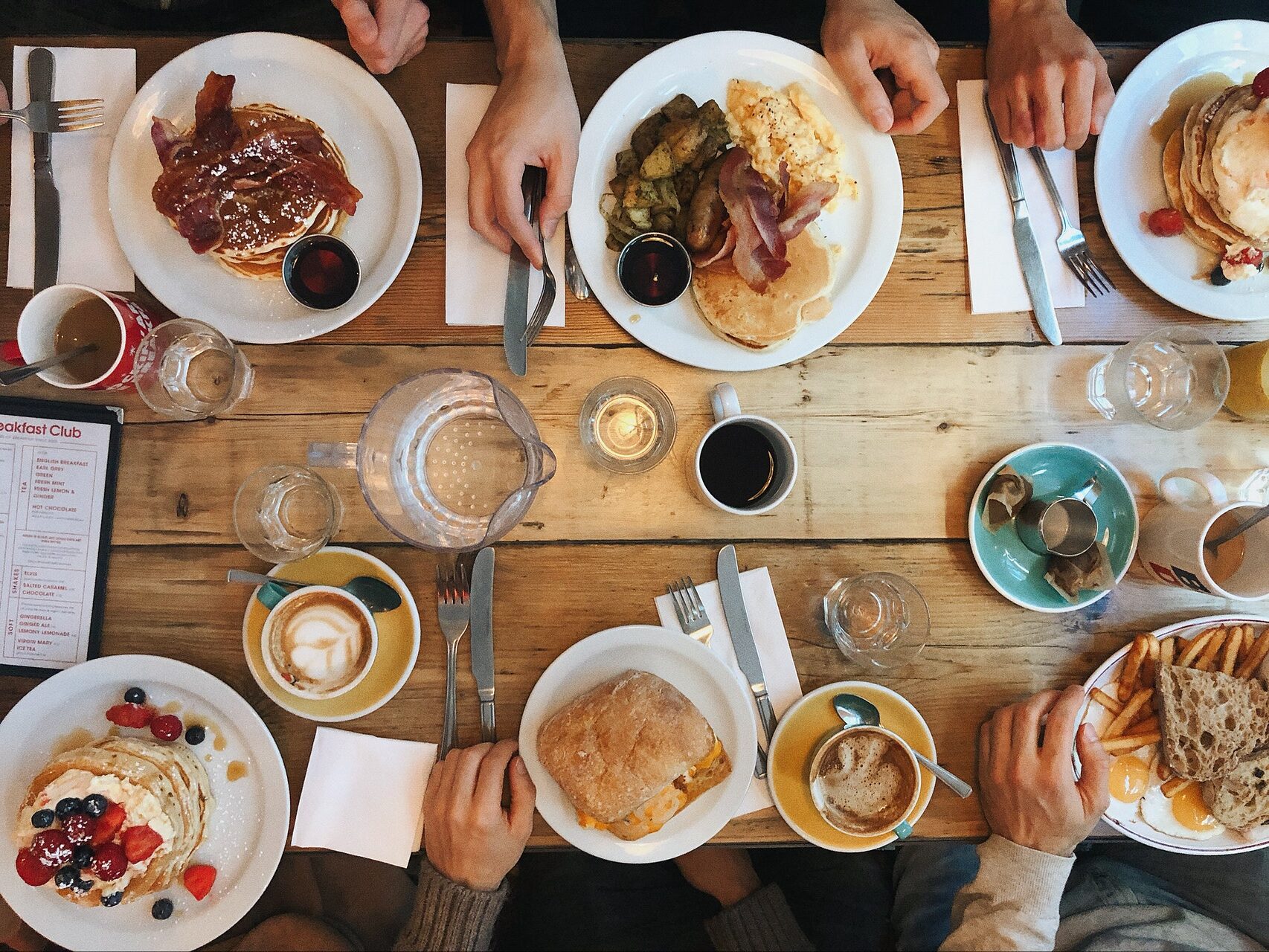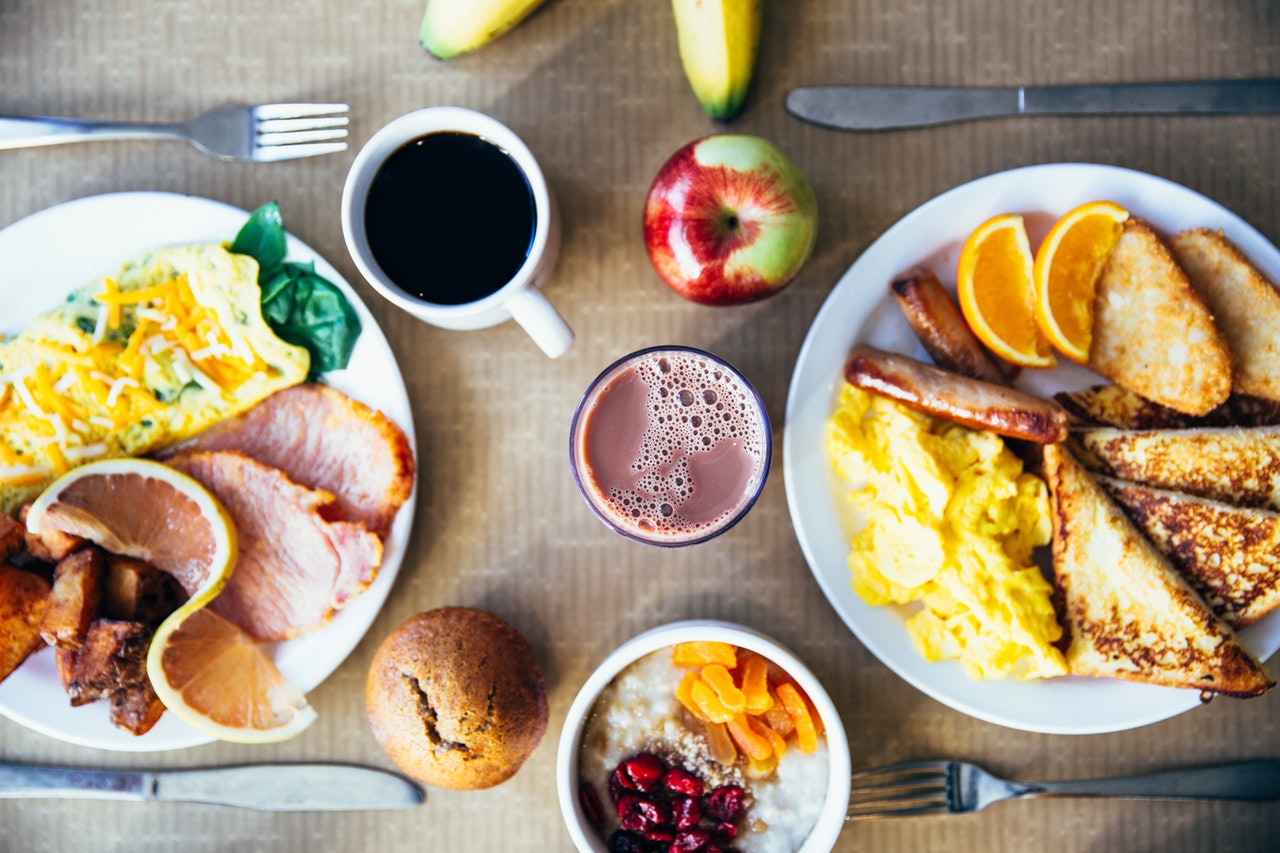Eating. We all do it. Whether we’re eating “healthy food” or “bad food”, we’re eating something. With everything that’s happened with COVID-19, eating habits may have changed for some of us, for better or for worse. In Part One of this post, I talked about three tips: substitute hunger for thirst, listen to your body, and enjoy all your food, healthy food or not. Below you’ll find three more tips, for a total of six.
Not your typical health tips
Again, just like my last post, I want to start off by saying I’m not going to provide advice for dieting or weight loss. These tips are not for restricted dieting or calorie deprivation. Such eating habits have the goal of losing weight for non-medical reasons. Wanting to slim down for that “summer body” isn’t a bad thing. I myself want to look snatched in the summer, fall, winter, and spring… basically all year round. However, research shows that such eating habits lead to eventual weight gain when you stop practicing these habits1,3. Mainly because these eating habits are not meant to be a lifestyle. People realize that real quick, hence stop these harmful eating practices.
My tips are also not part of a diet. I’m not here to proclaim what are good foods or what is healthy food. Certain diets (DASH, Diabetic diet, etc.) are good for specific health conditions and will term certain foods “healthy food” to help patients maintain healthy eating for their medical condition. If you don’t have any health issues impacted by food, then your body doesn’t need to go on a diet (in my humble opinion) or only eat specific types of food.
If you’re ready to make healthy eating a reality, grab my FREE Healthy Eating SMART Goal Template to start making positive changes.
I’m hoping these tips will positively impact you overall health, especially your physical body. And if you happen to get your desired “summer body” following these tips, that’s an added bonus!
So sis, here are three more things you can do to eat your way to better health.
1. Find other spices for life
I like salty fries. I like sweet desserts. I think salt and sugar are the spices of life. They make most things taste so much better, at least to me. I don’t think I will ever truly enjoy eating the pastries and snacks found in the healthy food section of a grocery store. Honestly, who likes cookies without real sugar? Please, if you do, explain why and how you enjoy them. Not to judge you, but so I can learn! And fries without salt? Girl, I’m not there yet (nor do I think I’ll ever be). All jokes aside, I know too much salt is related to some diseases, like high blood pressure, and too much sugar is related to diseases, like diabetes. Yet, one of these two spices is called for in most recipes. It’s hard to imagine a meal without one of them.
But there are other spices, herbs, and additives we can use to make things taste flavourful.
Other options
Ever heard of oregano, basil, or rosemary? They go great in tomato-based meat sauce for spaghetti. What about cinnamon, vanilla extract, or nutmeg? Certain baked goods hit a whole new level with these ingredients added to them. There’s chilli powder, garlic, cumin, coriander, thyme, curry spice, black pepper, honey, vinegars, and more. Some recipes are really good at calling for these ingredients to increase the flavour in a meal instead of relying mainly on salt and sugar. Experiment a little when you’re cooking – try using these spices, herbs, and additives. And while you’re using those other ingredients, you can slowly reduce your salt and sugar intake at the same time.
The aim of the game
The aim is not to cut out salt and sugar but to use them healthily. Like I said, I like these two ingredients. My cooking still includes salt and sugar, whether they’re deemed part of healthy food or not. However, in most recipes I cut the salt and sugar requirements in half or substitute these spices with other ingredients (ex. honey for refined white sugar). Remember in part one of this post I talked about enjoying your food? Find a way to still enjoy your favourite meals while incorporating other spices and/or reducing ever-so-slowly the amount of sugar and salt you use. If you do it slowly enough, eventually you won’t even notice the difference – or you will because food will start to taste too salty or too sweet, haha!
2. Eat Breakfast
I hear this phrase a lot: “I’m not hungry in the morning”. That may be true. Like I stated in part one of this post, listen to your body. You may not be hungry for a full meal, but what about a small morning snack? Also consider why you’re not hungry. Are you skipping breakfast because you’re not eating until dinnertime and filling up late in the evening? Are you truly not hungry or do you not have time to eat in the morning? Are you actually hungry in the morning but ignoring those hunger cues for whatever reason? Are you avoiding the meal because you were taught it has to consist of healthy food choices?
Why it’s important
I’m pushing breakfast because some studies show a person who eats breakfast gets more and healthier nutrients overall compared to those that skip the morning meal2. This means more vitamins and minerals, more complex sugars, less total and saturated fats. Eating breakfast is associated with healthier nutrient consumption2. I’m not going to state what goes into a healthy breakfast. This tip is not about that. Nor is this post about healthy food; it’s about healthy eating practices. Eating breakfast is considered one. And this doesn’t mean that if you eat breakfast you are automatically a healthier eater. Some people eating breakfast and are still not healthy because of their lifestyle. But eating breakfast might mean you stop grazing throughout the day or are motivated to make healthier eating choices.
Metabolism rules
And although not all studies agree, some studies show our metabolism and ability to use energy and handle sugar is highest in the morning versus evening7,8. I remember listening to the news a few years ago and they reported an article that said you could eat cake in the morning… my kind of breakfast! These studies aren’t focusing on healthy food. Rather they’re focusing on eating breakfast. If these studies are true for you, it means your body is looking for something to kick off the “energy using” processes your organs use when you wake up. Eating something in the morning will help really kick off these processes.
Sis, breakfast doesn’t have to be a lot of food. A granola bar and glass of orange juice could be a great place to start before you build up to eating a full meal. Or maybe a morning snack is as far as you get, and that’s okay. Ultimately, you know your body. If you wake up hungry in the morning, eat something.
3. Plan it out
I tell parents of young children this a lot when it comes to food and eating: you control the what, the where, and the when, they (children) control the how. A parent determines the type of food they offer to their child, where the child eats that food, and what time of day the child eats the food. The child will then decide whether they eat the food or not and how much of the food they’ll eat.
I wish someone was doing this for me. Oh wait, that’s my responsibility to do for myself now.
Sis, have you considered putting yourself on a schedule? Meal plans? Changing the setting of where you eat? Some people are just naturally blessed and don’t have to try as hard when it comes to eating healthily. But others, like me, we have to work at it. And that’s okay. In fact, most people do. I encourage you to plan to eat your way to better health. Don’t plan for a diet to save you. Don’t plan on weight loss to make you healthy (unless your doctor says losing weight is needed). Plan to engage in healthy eating. A regular meal pattern – when you eat, what you eat, where you eat – will help improve your overall wellness7.
Timing
First of all, timing is everything. Set up an eating routine – the times throughout the day when you will eat based on when you’ve noticed you’re usually hungry. Oh, and if you’re still hungry by the end of the day, good news: it’s still okay to eat after dinner. Just don’t go wild! A small, nutrient dense, low-energy snack (not a meal) is fine later in the evening5. It’s especially A-okay to eat this snack if you’re working out regularly too. Again, listen to your body and make wise decisions about when you put food in your belly.
What goes in…
Next, think about what you’ll eat. Figure out the meals you’ll eat during the week ahead of time and use that as the basis of your grocery list so that you’re buying food that you need and not buying food based on a whim. Why do this? Well, if you’re only buying foods based on what you know you’ll be cooking and eating, likely you’ll start to monitor what you eat. You’ll be able to pinpoint which eating habits can stay and which ones can be improved. You won’t just be focusing on eating what others consider healthy food but rather on enjoying your food. Hopefully, this will lead to healthier eating choices.
Location, location
Don’t forget to pick where you’ll eat. Eating while working or in front of the TV is linked to mindless eating – ignoring your body and not listening to it – if the meal isn’t already planned out. Certain people or places may not support your healthy eating journey or pressure you to eat in a way you don’t want to. Sometimes you won’t be able to control where you eat. But if you can, try to. Eating is supposed to be enjoyable, and a positive environment can help with that.
Now what?
Whew, that was a lot of information! In case you missed it, check out Part 1 of this blog post for more tips on eating your way to better health.
But sis, eating well and for better health doesn’t just happen. It takes dedication and planning. That’s why I suggest using my FREE Healthy Eating SMART Goal Template to make attainable positive changes in your eating habits.
How are you eating your way to better health? Leave a comment below.
And please like and share this post with your friends!
References
- Blomain, E. S., Dirhan, D. A., Valentino, M. A., Kim, G. W., & Waldman, S. A. (2013). Mechanisms of Weight Regain following Weight Loss. ISRN obesity, 2013, 210524. https://doi.org/10.1155/2013/210524
- Gibney, M. J., Barr, S. I., Bellisle, F., Drewnowski, A., Fagt, S., Livingstone, B., Masset, G., Varela Moreiras, G., Moreno, L. A., Smith, J., Vieux, F., Thielecke, F., & Hopkins, S. (2018). Breakfast in Human Nutrition: The International Breakfast Research Initiative. Nutrients, 10(5), 559. https://doi.org/10.3390/nu10050559
- Hall, K. D., & Kahan, S. (2018). Maintenance of Lost Weight and Long-Term Management of Obesity. The Medical clinics of North America, 102(1), 183–197. https://doi.org/10.1016/j.mcna.2017.08.012
- Hetherington, M. M., Blundell-Birtill, P., Caton, S. J., Cecil, J. E., Evans, C. E., Rolls, B. J., & Tang, T. (2018). Understanding the science of portion control and the art of downsizing. The Proceedings of the Nutrition Society, 77(3), 347–355. https://doi.org/10.1017/S0029665118000435
- Kinsey, A. W., & Ormsbee, M. J. (2015). The health impact of nighttime eating: old and new perspectives. Nutrients, 7(4), 2648–2662. https://doi.org/10.3390/nu7042648
- Mattes R. D. (2010). Hunger and thirst: issues in measurement and prediction of eating and drinking. Physiology & behavior, 100(1), 22–32. https://doi.org/10.1016/j.physbeh.2009.12.026
- Paoli, A., Tinsley, G., Bianco, A., & Moro, T. (2019). The Influence of Meal Frequency and Timing on Health in Humans: The Role of Fasting. Nutrients, 11(4), 719. https://doi.org/10.3390/nu11040719
- Ruddick-Collins, L. C., Johnston, J. D., Morgan, P. J., & Johnstone, A. M. (2018). The Big Breakfast Study: Chrono-nutrition influence on energy expenditure and bodyweight. Nutrition bulletin, 43(2), 174–183. https://doi.org/10.1111/nbu.12323







